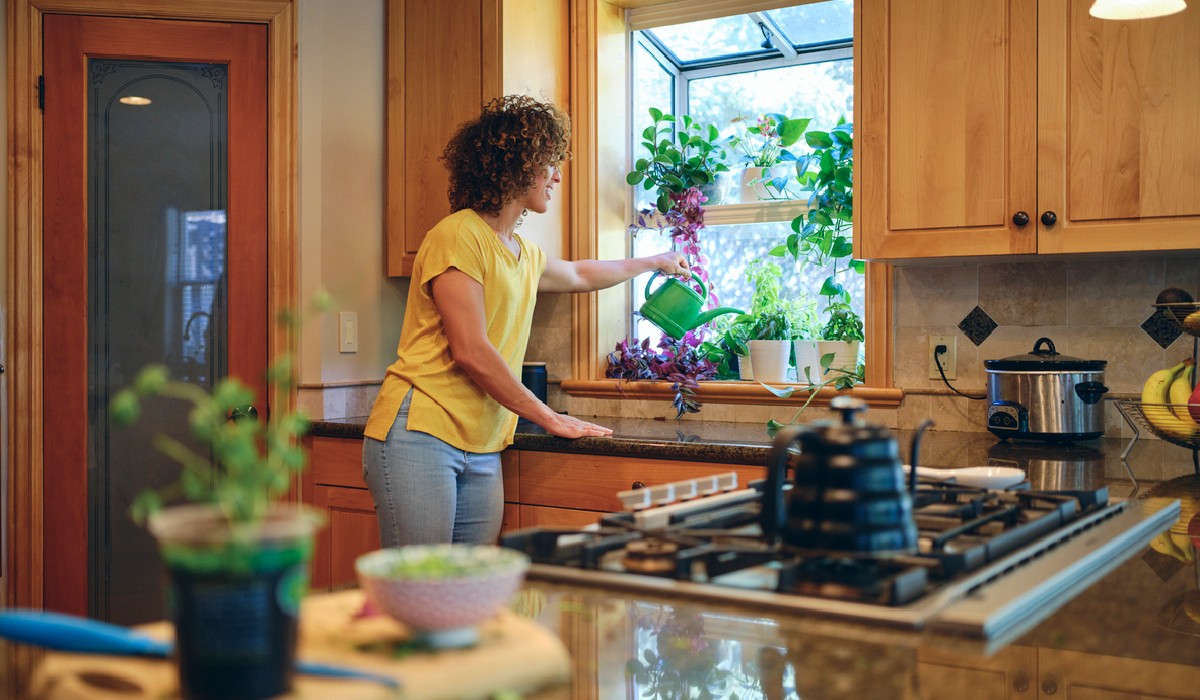How To Start Cultivating Vegetables With an Indoor Garden

Gardening is an enjoyable and rewarding pastime. Starting a garden from scratch can be daunting – but it doesn’t have to be! You can start small and cultivate delicious vegetables indoors with just a little bit of know-how. In this post, we’ll explain how to get started with an indoor vegetable garden and cover everything you need to know to maximize your indoor garden’s potential.
We’ll discuss the different types of containers, soil mix, and plants that are most suited for an indoor garden, and how to build the best environment for your plants to thrive. We’ll also cover how to care for your plants, from fertilizing to pest control. So, if you’ve been wanting a garden but need a little help to get started, read on.
What You’ll Need
In order to successfully cultivate vegetables in your home, there are certain materials and supplies you will need. Listed below are the most important items that will help get you started.
Containers
You will need containers to hold your soil and plants. These can be anything from large outdoor flowerpots, trays, or bottles to smaller containers such as milk cartons, yogurt cups, or teacups. Be sure to consider the specific needs of the type of vegetables you plan on growing when picking out an appropriate container size.
Soil
It’s important to choose soil specifically designed for indoor gardening. This type of soil contains beneficial nutrients for your plants and can help them thrive in an indoor environment. It is best to purchase soil as opposed to trying to make it yourself for the optimal growth of your vegetables.
Seeds and Seedlings
You can purchase seeds or seedlings from local garden stores or online. Be sure to find out what types of vegetables can thrive in an indoor environment before making a selection.
Watering Can or Spray Bottle
You will need some sort of watering vessel in order to keep your plants hydrated and healthy. A simple watering can or spray bottle will do the job just fine.
Understanding Light Requirements
Light is essential for photosynthesis which is necessary for healthy plant growth and development. Natural sunlight is best when cultivating indoors, so if you have window access that allows sunlight into your home, that would be ideal. However, there are other ways to provide light to your plants even without direct sun exposure. Artificial lighting such as grow lights can be used to supplement natural sunlight if needed. These lights should be placed close enough to your plants so that they receive the proper amount of light for optimal growth.
Soil Types
The type of soil you choose is important when cultivating indoors. It should be lightweight and well-draining, yet still be able to retain some moisture to avoid drying out too quickly. There are various types of soils available that are specifically designed for indoor gardening with different mixtures, so it’s important to know what type of soil is best for the particular vegetables you plan to grow.
Watering Strategies
Watering your plants regularly is an essential part of keeping them healthy and strong. However, overwatering is just as damaging as underwatering, so it’s important to find the right balance between the two when developing a watering schedule for your garden. It’s best to water deeply but less frequently, ensuring that the soil gets a thorough soaking while preventing it from being overly saturated or dried out completely between waterings.
Pest and Disease Control
Pests and diseases can pose a serious threat to the health of your plants if left unaddressed. Some common pests include aphids, spider mites, and whiteflies while the most common diseases are powdery mildew, blight, and damping off (root rot). It’s important to check plants regularly for signs of pests or disease and take immediate action if needed with natural pest control methods such as neem oil sprays or fungicides if problems arise from fungus infection. These methods are much safer than chemical sprays which may affect both plant health and human health.
Harvesting
Harvesting involves being aware of when fruits and vegetables need to be picked in order for them to remain at their peak freshness. This depends on the particular plant variety you are growing as well as the conditions in which they have been grown (for example, tomatoes should be picked when they are fully ripened on the vine). With most crops, it’s better not to wait too long before harvesting them. Otherwise, they may start losing their flavor or nutritional quality. Once harvested, promptly store them in a cool place or refrigerate them until ready for use.
Conclusion
Cultivating vegetables with an indoor garden is a great way to enjoy fresh produce all year round while also developing a hobby that is both enjoyable and rewarding. Whether you’re a beginner or an experienced gardener, the steps outlined in this article should give you the information and supplies you need to get started. With the right materials and some dedication, you can soon be enjoying the taste of your very own homegrown vegetables and herbs. Take the tips and information provided here and confidently embark on the journey of cultivating vegetables in your own indoor garden. Enjoy!